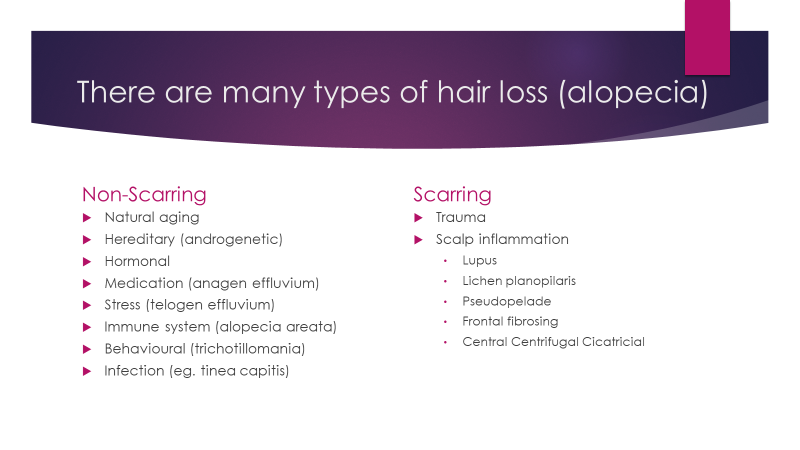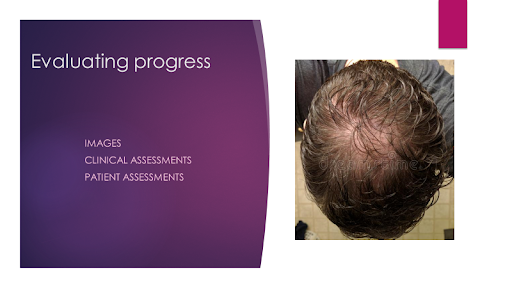What is the natural history of our scalp hair?
We are born with a limited number of hair roots. Hair roots are in a continuous state of active growth, transition, and rest corresponding to the hair cycle of growth, shedding and renewal. The thousands of hair roots are in different stages of cycling which is why we have a stable constant amount of hair. During childhood and adolescence, these hair roots progressively enlarge to support the growth of thicker denser hair. Beyond middle age, and sometimes earlier, these roots progressively shrink in size and stay in a more prolonged phase of hibernation without hair growth. This leads to visibly thinner hair shafts and less hair overall. This natural tendency is accelerated in the presence of genes for hair loss known as androgenetic alopecia, and during the perimenopausal time in women due to a reduction in estrogen levels.
There are multiple types of hair loss and proper diagnosis is essential for determination of cause and treatment. This is best done by scalp assessment and hair density evaluation. Dermatologists are trained to provide hair and scalp evaluation for hair loss.

If nutritional aspects are in balance, then the primary therapy is directed to extending the time hair roots are in the active growth phase. This may be accomplished by (1) agents applied directly on the scalp (topicals) such as minoxidil (Rogaine TM) or Neoptide TM ; (2) hormonal blocking agents such as birth control pills or spironolactone for women and finasteride for men; (3) platelet rich plasma injections which can increase the activity of hair roots; and (4) hair transplantation.
If you have hair loss: Step 1 is examination and testing as required, Step 2 is proper diagnosis; and Step 3 is a management strategy including monitoring.


